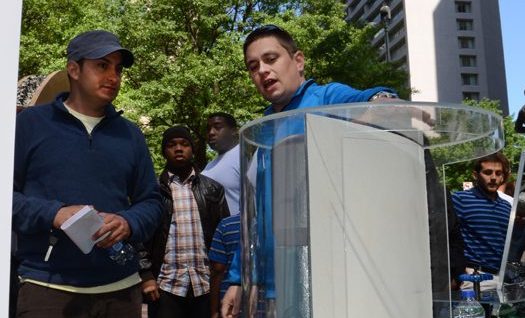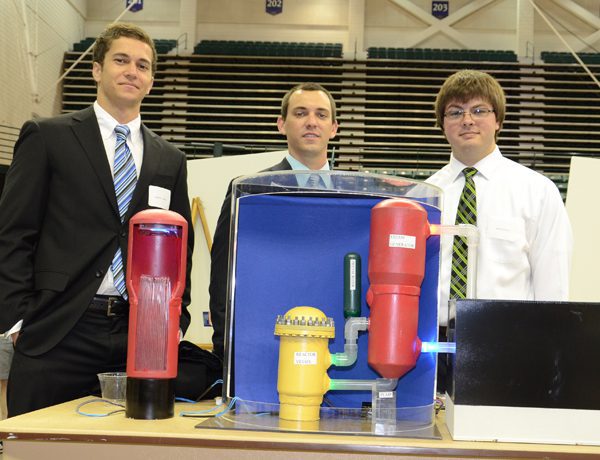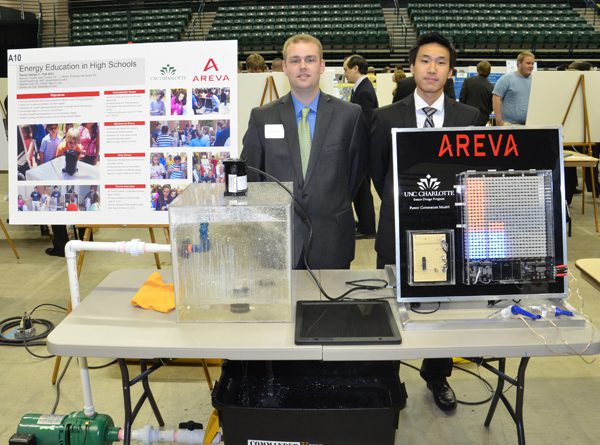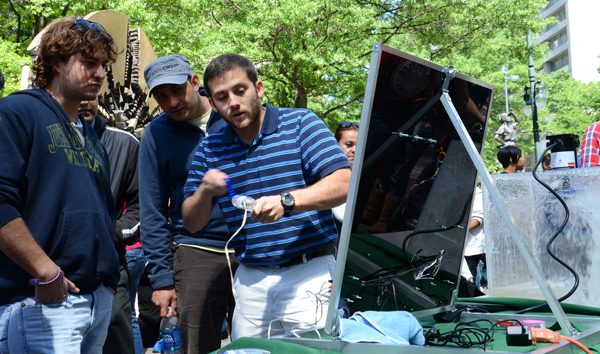Energy Education Projects

As part of their engineering education, students in the Lee College of Engineering are helping to educate school children about engineering. Specifically, they are teaching them about energy engineering through displays and hands-on activities that include working models of nuclear, hydro and solar power, and through interactive games.
The projects were sponsored by local entities of energy companies Westinghouse and AREVA. To date, the projects have been in action at the North Carolina Science Festival in uptown Charlotte and on the UNC Charlotte campus, and at area elementary schools.

The project Working Model of a Generation III+ Nuclear Plant was sponsored by Westinghouse.
“Westinghouse wanted a physical model of a nuclear reactor, for education purposes such as science fairs and schools,” said team member Trey Davis, a senior in Systems Engineering. “We built a model of a two-loop pressurized water reactor that demonstrates how water is heated in the first loop by the nuclear reactor, and then the steam passes to the secondary loop that creates steam to turn the turbines. Our model uses LED lights to show the steam in two different colors, so you can see what is flowing where.”
The team of Davis, Corey Anderson, Karl Buchner, Josh Pruss and Matt Towery designed the model and built its components using a rapid prototype machine.
“For me as a systems engineer it was fascinating to see how all the thousands of systems involved in a nuclear plant come together,” Davis said. “For the project itself it was interesting and challenging to get all the part and controls completed and working on time and within budget.”

The second project, Energy Education Project for Schools, was sponsored by AREVA. The project team was made up of seniors David Pogrebinsky, Matthew Smith and Derrick Lee.
The team designed and built an exhibit that included multiple educational displays. A hydroelectric display demonstrated how high-pressure water turns a turbine and generates electricity. A mechanical power display let students use their own muscle to turn hand power cranks and illuminate LED lights in races against their friends. A solar display showed how solar panels absorb energy and then convert it into electrical energy.

